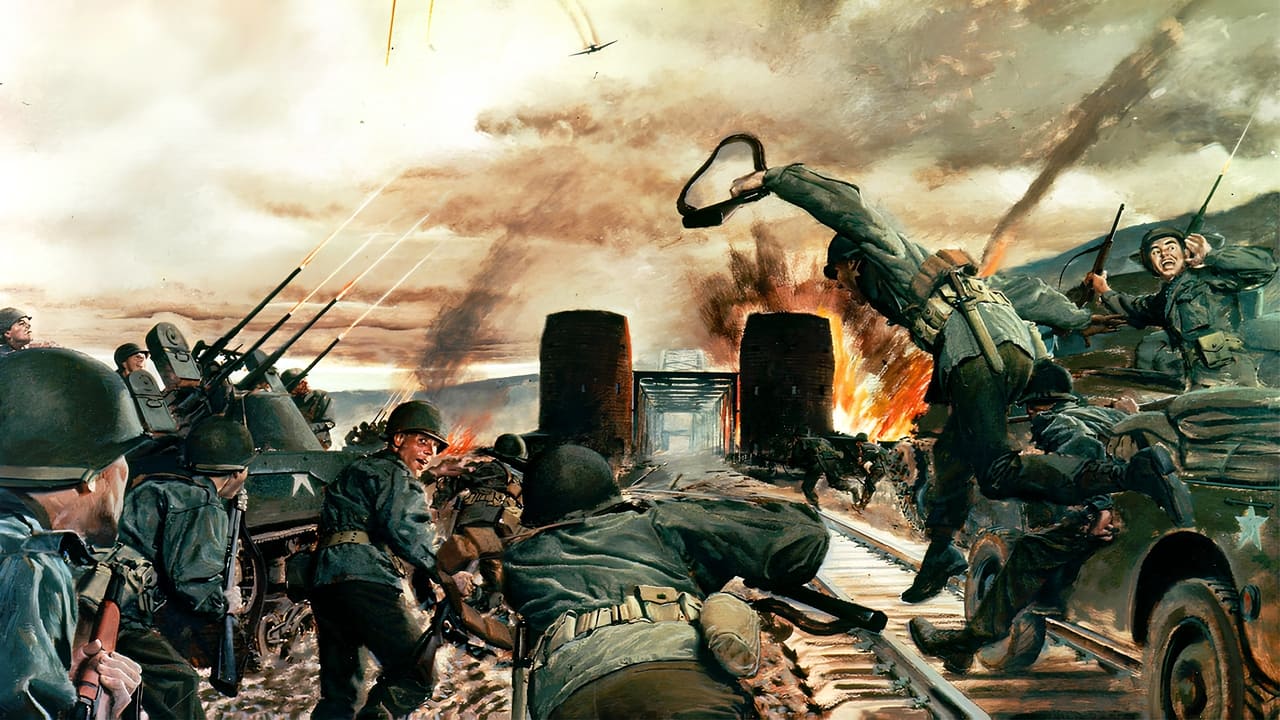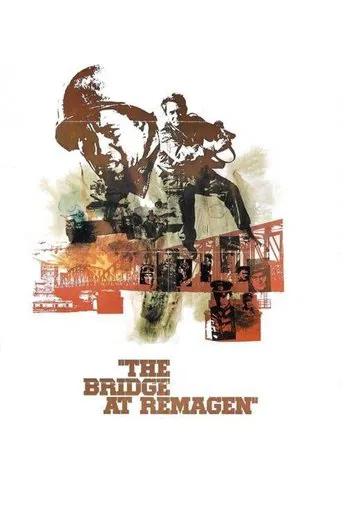

Unlike it The Longest Day or Midway or Patton and MacArthur, The Bridge At Remagen will not give you any insights into the high command decisions involving the bridge left standing. The closest you will see to a general on the American side is E.G. Marshall and he's using an alias for a character based on J. Lawton Collins.No this is about the GIs and the Wehrmacht soldiers who slugged it out on the ground. The bridge was the only one left standing on the Rhine an oversight because Hitler ordered them all to be blown.But some on the scene wanted it left open so that several thousand German troops needed to defend The Fatherland could not be trapped in France. Then the Americans seeing it still not blown because of bad explosives used then wanted to capture it intact. The seesaw priorities provide a lot of drama.Robert Vaughn plays the German major left in command of the 'troops' that are ill equipped and understaffed for their mission. The saddest sight to see is a Hitler youth firing on and killing a GI from a hotel window. Of course the squad led by Lt. George Segal finds and kills him. It was truly heartbreaking.Segal and his men are those actually on the bridge trying to take and hold it and the battle scenes are intense. He's ably assisted by Segeant Ben Gazzara. He's also supervised by an officious major whom the audience I guaranteed wanted to punch out and he's played by Bradford Dillman.For the story the GI story of our first troops into Nazi Germany, despite historical errors you can't go wrong with The Bridge At Remagen.
... View MoreIt's interesting to look back and see the development of war films over the decades since movies began being made. Early films showed us acts of heroism or were used as propaganda to promote war interests and boost the morale of people at home. In the fifties and sixties the war film began to slightly alter. There were plenty of movies still being made but stories focused on the homecoming of soldiers as well as events that happened. Even those movies began to alter as the war in Vietnam raged and suddenly the clean uniformed scenes of battle opened up to more gritty glimpses into what took place. The seventies led us into a look at war at its ugliest and also at the effects it imposed on those who fight. That was the standard until the last decade or so when we've seen a melding of all of these types of films, a good thing in my opinion, because the truth is indeed an amalgamation of all these points of view. But one of the first films in the sixties to begin that melding was THE BRIDGE AT REMAGEN.Based on the true story of that bridge the film takes place during WWII. The German Army has been all but defeated and most of those in charge realize this. As they army retreats bridges are being blown up all along the river ways to prevent the invasion of Germany by the allied forces. The only bridge remaining is that in Remagen.The film is told from both sides of the story. On the allied side leaders send their men in without care for their morale or the fatigue they feel. This is a chance to cut off nearly 10,000 German soldiers from their homeland and capture them. Tired, worn down and promised over and over again that they'll get a break, a group led by Lt. Phil Hartman (George Segal), a battle weary but well informed leader, is pushed first to retake a town and then push even further on to take the bridge by Maj. Barnes (Bradford Dillman), a career officer who sees little of the battle from behind his command post while ordering others to move forward. Among the group under Hartman's command is Sgt. "Angel" Angelo (Ben Gazzara), a soldier looking to do well financially from the war by collecting items from the dead German soldiers he comes across. This doesn't sit well with Hartman and the two come into conflict from time to time.On the other side we are presented with Maj. Paul Kreuger (Robert Vaughan). Kreuger is just back after a serious injury and given the job of blowing up the bridge at Remagen. Both he and Gen. Von Brock (Peter Van Eyck) disagree with the commands they receive from headquarters, more concerned with trying a last ditch effort to rescue the soldiers still on the other side of the Rhine river. But the high command doesn't care, mistakenly feeling they can lose those soldiers and still win the war. Kreuger puts the charges in place to blow the bridge but holds off until the last minute before doing so.These two stories move along at a steady pace with tons of battle sequences to press them forward. The intersecting of the two tales is what fills the final third of the film. What makes this movie different from most is that early war films had groups of men together fighting a common enemy and few were killed in the line of duty. This film shows that this wasn't the case in reality. Men die. The body count climbs as commanders at a safe distance, on both sides, send out commands to their men to win at all costs. And those costs are the bodies of those same men.The film is a solid war film and much better than I remember it having seen it as a child when it was first released. Both Segal and Vaughan present characters on both sides of the issue that have honor in their blood but are forced to follow orders. The supporting casts does an equally impressive job, bringing to life characters that you care about. John Guillermin's direction is some of his best in a career that included THE BLUE MAX and THE TOWERING INFERNO. Once more Twilight Time offers the cleanest and best looking copy of this film that can be found. Extras this time around are light and include the isolated music track and original theatrical trailer. As always the number of copies they are offering are limited so if you are at all interested make sure you pick one up before they're gone.
... View MoreI especially liked the deeper plot,character development & constant clashes w/ Upper ranks & NCO's in this movie,but FURY had higher production values as far as authenticism,but less plot developments(also very young looking actors,Pitt,Cera,Logan & that Walking dead actor). Also. both movies accurately depict the Germans conscripting young children to fight the allies,& even shows a young sniper, killing several GI's.I was very curious in seeing the modern looking tanks in the movie,they reminded me of modern day Patton tanks used in ?(late WWII?,Korean War?).I found out from these reviews that they were not Sherman,but M24 Chaffee tanks w/ a elongated 'tail' turret section, not seen on SHermans.I always thought Robert Vaughn would have made a very good 'James BOnd', especially his menacing sounding voice & cold expression, very sinister sounding German officer. All in all,if I had a choice,I would much rather see Bridge than Fury, if only for the involved story telling which really drew me in....(saw this movie on retro TV,THE WORKS,channel 38.6)
... View MoreJohn Guillermin directed this World War II tale set in its last days, as Allied forces are trying desperately to gather its forces in order to cross a bridgehead into Germany, where they can finish off Nazi forces entrenched there. Robert Vaughn plays a Nazi general in charge of preventing this from happening, so he is ordered to blow up the last bridge leading from the Rhine, which would trap their own forces on the wrong side, but will have to be done if they have any chance to save the Third Reich. Ben Gazzara and George Segal play American soldiers trying to keep the bridge open.Mediocre film has a good premise but is utterly undistinguished; there is just little about it that is memorable, despite some good action scenes.
... View More